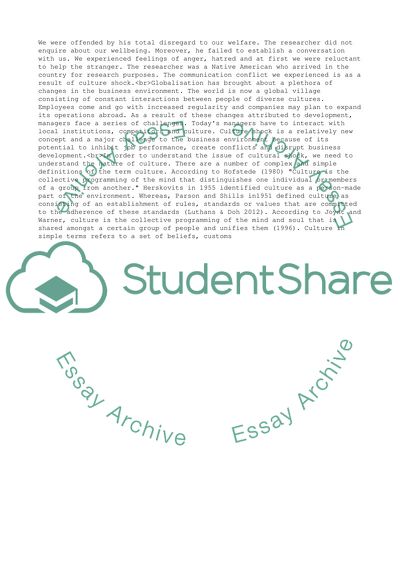Cite this document
(Culture Experiences - Mini Culture Shock Analysis Coursework Example | Topics and Well Written Essays - 3000 words, n.d.)
Culture Experiences - Mini Culture Shock Analysis Coursework Example | Topics and Well Written Essays - 3000 words. https://studentshare.org/management/1870789-culture-experiences-mini-culture-shock-analysis
Culture Experiences - Mini Culture Shock Analysis Coursework Example | Topics and Well Written Essays - 3000 words. https://studentshare.org/management/1870789-culture-experiences-mini-culture-shock-analysis
(Culture Experiences - Mini Culture Shock Analysis Coursework Example | Topics and Well Written Essays - 3000 Words)
Culture Experiences - Mini Culture Shock Analysis Coursework Example | Topics and Well Written Essays - 3000 Words. https://studentshare.org/management/1870789-culture-experiences-mini-culture-shock-analysis.
Culture Experiences - Mini Culture Shock Analysis Coursework Example | Topics and Well Written Essays - 3000 Words. https://studentshare.org/management/1870789-culture-experiences-mini-culture-shock-analysis.
“Culture Experiences - Mini Culture Shock Analysis Coursework Example | Topics and Well Written Essays - 3000 Words”. https://studentshare.org/management/1870789-culture-experiences-mini-culture-shock-analysis.


